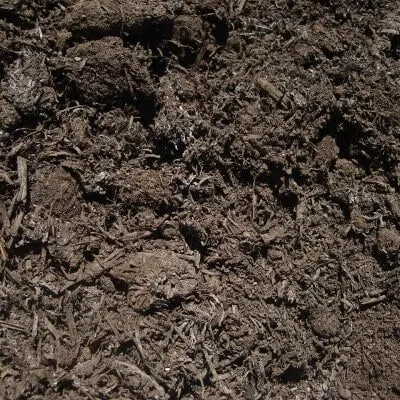When it comes to growing healthy plants, choosing the right potting mix is key. A good potting mix provides plants with the right balance of nutrients, water retention, and drainage. But what should you look for in a quality potting mix? Let’s explore the top five ingredients that make up a great potting mix and why each one is important.
Top 5 ingredients in potting mix
1. Peat moss
Peat moss is a common ingredient in many potting mixes. It’s made from decomposed plant material that’s gathered from peat bogs. It’s light, fluffy, and holds moisture well.
Peat moss has excellent water-holding properties. It can absorb a lot of water and then release it slowly to the plants, which helps keep the soil moist. It adds a light, airy texture to the potting mix, which improves soil aeration. Good aeration is essential for healthy root growth.
Peat moss is slightly acidic, which can benefit plants that prefer acidic conditions, like blueberries and azaleas.
While peat moss is great for moisture retention and soil structure, it’s not a sustainable resource because it takes a long time to form. Look for mixes that use sustainably sourced peat or consider alternatives if you’re eco-conscious.
2. Perlite
Perlite is a type of volcanic glass that’s heated until it pops into small, white, lightweight pellets. It’s often used in potting mixes to improve drainage and aeration.
Perlite helps prevent the potting mix from becoming too compacted, which allows excess water to drain away. Good drainage is key to preventing root rot and keeping your plants healthy. It creates air pockets in the mix, improving oxygen flow to the roots. Roots need oxygen to grow properly, so good aeration is key. Its light texture makes the potting mix easier to handle and move, especially if you’re using large containers.
Perlite is a great addition for improving drainage, but it can be a bit dusty. It’s a good idea to wear a mask when handling it and to mix it thoroughly with other ingredients.
3. Compost
Compost is decomposed organic material, such as kitchen scraps, yard waste, and other natural materials. It’s rich in nutrients and adds a lot of beneficial organic matter to the potting mix.
Compost is packed with essential nutrients like nitrogen, phosphorus, and potassium. These nutrients help plants grow strong and healthy.
Adding compost improves the texture of the potting mix, making it more crumbly and less compacted. This helps with root growth and water absorption. Compost is full of beneficial microorganisms that help break down organic matter in the soil. These microbes support plant health and improve soil fertility.
Make sure the compost is well-decomposed before adding it to your potting mix. Fresh compost can be too strong and may harm young plants. Also, avoid compost from unknown sources as it might contain weed seeds or diseases.

4. Vermiculite
Vermiculite is a mineral that’s heated until it expands into lightweight, sponge-like pellets. It’s often added to potting mixes to improve moisture retention and soil aeration.
Vermiculite can absorb and hold a lot of water, which helps keep the soil moist for longer periods. This is especially useful for plants that need consistent moisture. Like perlite, vermiculite creates air pockets in the potting mix, improving oxygen flow to plant roots. Vermiculite can hold onto nutrients, making them available to plants over time.
Vermiculite is a good choice for improving moisture retention, but it can become compacted over time, especially in high-water-use situations. It’s also important to use it in combination with other ingredients to balance drainage and aeration.
5. Sand
Sand used in potting mixes is usually coarse sand, not the fine beach sand. It helps improve drainage and soil structure.
Sand helps increase the drainage capacity of the potting mix, preventing water from pooling at the bottom of pots and reducing the risk of root rot.
It adds texture to the mix, helping to prevent compaction and creating a more open structure that allows roots to grow more freely. Sand adds some weight to the mix, which can be beneficial for larger containers to help keep them stable.
Make sure that the sand you use is clean and free of salts or other impurities. Fine sand can actually reduce drainage, so always opt for coarse sand and mix it well with other ingredients.
Putting it all together – premium potting mix
When choosing or making a potting mix, look for a balance of these key ingredients to create a mix that meets your plants’ needs. Each ingredient plays a specific role:
– Peat moss for moisture retention and soil structure.
– Perlite for drainage and aeration.
– Compost for nutrients and soil fertility.
– Vermiculite for additional moisture retention and aeration.
– Sand for improved drainage and soil texture.
A well-balanced potting mix will help your plants grow strong and healthy by providing them with the right environment for their roots. Whether you’re growing flowers, vegetables, or herbs, understanding these ingredients will help you make informed choices and create the best growing conditions for your plants.

A quality potting mix is key for a thriving garden. By knowing what ingredients to look for – peat moss, perlite, compost, vermiculite, and sand – you can choose or create a mix that will support healthy plant growth and make your gardening efforts more successful. With the right mix, your plants will have the best start and the best chance of thriving in their containers.


